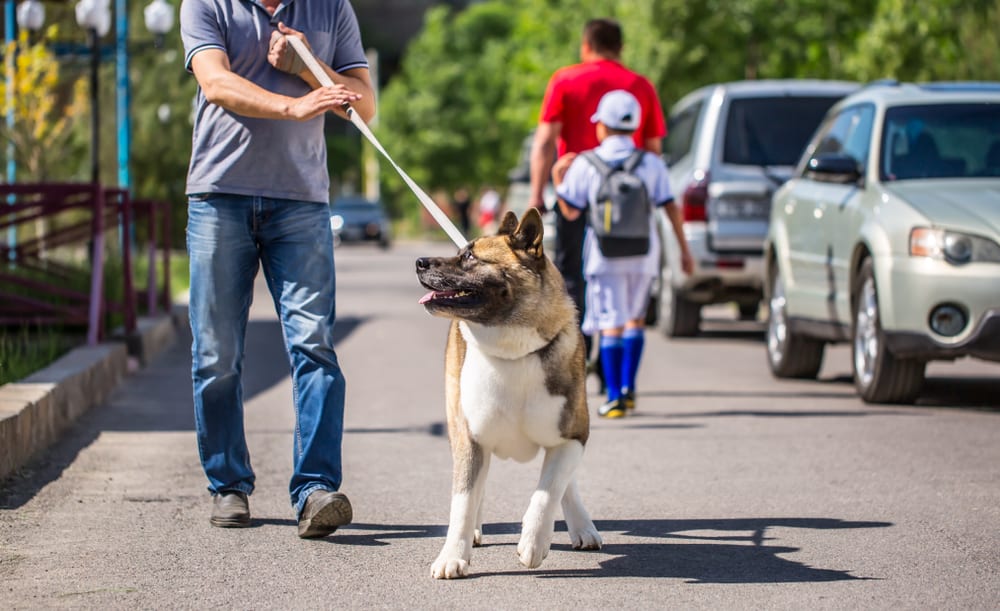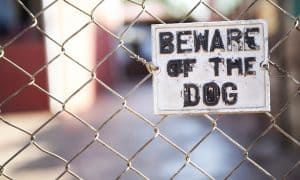“This post contains affiliate links, and I will be compensated if you make a purchase after clicking on my links.”
During National Dog Bite Prevention Week (April 11-17), a coalition of veterinarians, animal behavior experts, and insurance representatives are urging people to take steps to prevent a surge in dog bites as the weather warms, lockdowns ease, and life returns to normal.

To provide more tips for pet owners, members of the National Dog Bite Prevention Week Coalition— which includes the American Veterinary Medical Association (AVMA), State Farm, Insurance Information Institute (Triple I), American Humane, and Victoria Stilwell Positively— will be hosting a Facebook Live event on Monday, April 12, at 1 p.m. Eastern.
The event, hosted by certified animal behavior consultant Steve Dale, will discuss training tips to help prevent bites, how to safely socialize your dog after a year of isolation, and how to recognize the warning signs that a dog may bite. In addition, the coalition will be releasing the latest dog-related injury claims data.
According to State Farm, the month with the highest number of dog-related injury claims last year was March, when people first went into lockdown at the start of the COVID-19 pandemic. They reported a 21.6% increase in dog bites compared to the previous March, likely due to dogs dealing with owner stress, disruption in routines and more people around the house throughout the day. Experts fear another disruption—this time cause by the easing of restrictions for activities outside the home—could lead to another spike in bites.
The Insurance Information Institute reported that in 2020, insurance companies paid $853.7 million for 16,991 dog bite and injury claims. While the number of dog-related injury claims decreased 4.6% compared to the previous year, the amount paid for these claims increased 7.1%–a record high. The average claim payment was $50,245 in 2020, up 12.3% from $44,760 in 2019.
“Last year at this time many people—and pets—were in the early stages of lockdown mode, and the stress and disruption of this change can be seen when we look at the data on dog bites,” said Dr. Douglas Kratt, president of the AVMA. “This year, as we begin to emerge from those lockdowns and isolation, our concern is making sure our dogs—many of which were adopted during the past year—are prepared for safe interactions outside of the home.”
“Because the anxiety that isolation produces can lead to negative behaviors in our pets, helping dogs prepare for changes in our schedules will help minimize their anxiety and smooth the transition as we return to the office and other activities outside of the house,” said Dr. Lesa Staubus, rescue veterinarian for American Humane.
To help our pets with this transition, the National Dog Bite Prevention Coalition recommends the following tips:
• Make sure your pet is healthy. Not all illnesses and injuries are obvious, and dogs are more likely to bite if they are sick or in pain. If you haven’t been to the veterinarian in a while, schedule an appointment for a checkup to discuss your dog’s physical and behavioral health.
• Take it slow. If your dog has only been interacting with your family this past year, don’t rush out into crowded areas or dog parks. Try to expose your dogs to new situations slowly and for short periods of time, arrange for low-stress interactions, and give plenty of praise and rewards for good behavior.
• Educate yourself in positive training techniques and devote time to interact with your dog.
• Get outside for leash training and allow your dog to do more socializing.
• Gradually start arranging play dates with other dogs and people as allowed, and carefully increase the amounts of time and freedom together. This will help your dog get used to being with other canine companions again.
• Be responsible about approaching other people’s pets. Ask permission from the owner before approaching a dog, and look for signs that the dog wants to interact with you. Sometimes dogs want to be left alone, and we need to recognize and respect that.
It’s also important to remember that even well-trained and well-behaved dogs can bite if they are put into the wrong situation. Addressing and avoiding these situations is key to reducing dog bites, and not focusing on unrelated factors such as a dog’s breed or appearance.
“Just like humans, dogs are individuals, and every dog has a unique personality,” said Heather Paul, public affairs specialist at State Farm. “That’s one reason why State Farm does not ask what breed of dog a person owns. While their breed or type may dictate how they look, how a dog reacts in a situation isn’t guaranteed by what breed or type of dog they are, so it’s important to recognize that while most dogs won’t bite, any dog can bite and as responsible pet owners it’s our duty to make sure that we are keeping both our pets and people safe.”
“When people talk about dog bite prevention, the focus automatically goes to dog training,” said Victoria Stilwell, celebrity dog trainer and behavior expert. “While it’s important that we give dogs skills and teach them basic manners, the emphasis actually has to be on building emotional health and wellness so they can be successful in our human domestic world.”
“While dog bites are a serious public health issue, the good news is that most dog bites are preventable,” said AVMA President Dr. Kratt. “By taking steps to train and properly socialize our dogs, and educate ourselves and loved ones on dog bite prevention, we can help reduce bites and keep dogs in loving homes, where they belong.”
For more tips on preventing dog bites, visit AVMA.org/DogBitePrevention.
SOURCE American Veterinary Medical Association
























[…] Source link […]